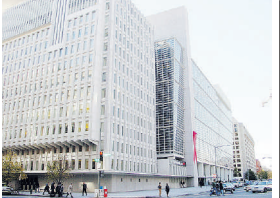
World Bank's new fiscal policy proposal could reduce Kenya’s debt-to-GDP ratio by about one-third within 10 years, returning the country to a position closer to its debt level of the 2010s, when the debt buildup began.
It takes into consideration increasing economic growth, real wages, and consumption across society.
Under this scenario, it is estimated that Kenya’s debt-to-GDP ratio would fall to about 44 per cent of GDP by 2035, close to the mid-2010s figure.
Real wages and consumption could rise by about four per cent if all reforms are implemented, and GDP growth and labour productivity by 7.1 and 6.4 per cent respectively.
According to the bank's Public Finance Review released on Friday but embargoed until Tuesday, Kenya's fiscal situation is precarious: public debt stood at 68 per cent of gross domestic product (GDP) in 2024, and the risk of debt distress is high.
The global lender warns that years of expensive public debt accumulation, the recent tightening of global credit conditions, and ballooning interest costs—which absorb over one-third of Kenya’s public revenues—are shaping Kenya’s current fiscal imbalances and prompting unpopular fiscal adjustment measures.
Although the bank has hailed the country for reducing capital expenditure which has supported fiscal consolidation, it is worried that t budget inefficiencies and fiscal slippages, high interest payments, and weak governance are hampering service delivery, while pending bills are soaring.
“Coupled with an economic slowdown and stalled poverty reduction, Kenya’s fiscal outlook places the country at a crossroads,’’ the report reads.
“Increased public debt coupled with recent increases in global and domestic interest rates have pushed up debt servicing costs. Interest payments now crowd out spending on many important public services, including social protection for the poor.”
The report dubbed ‘’Beyond the budget: fiscal policy for growth and jobs’’, explores options for Kenya that look beyond the national budget to leverage fiscal and structural policies that can promote macroeconomic stability, economic growth, job creation, and poverty reduction, while improving governance.
For instance, World Bank wants Kenya to Promote the advancement of the tax system and formalisation by reforming personal income tax (PIT) and payroll levies; simplify the tax regime for micro, small, and medium enterprises; and phase out mortgage interest rate deductions.
This, it says will contribute about 0.25 per cent of GDP in additional revenues per year.
The lender also wants Kenya to strengthen the efficiency of income tax incentives and broaden the income tax base by rationalising tax exemptions in PIT and corporate income tax (CIT), which tend to be inefficient and regressive. This will give the country up to 2.2 per cent of GDP in additional revenues per year.
It has also asked the country to strengthen the efficiency of value added tax (VAT) exemptions and broaden the tax base by removing VAT exemptions with limited advancement.
“To minimise adverse effects on poverty and consumption, VAT reform should focus on regressive exemptions and be considered only as part of a broader package of policies.”
The global lender has also asked Kenya to better capture the value of real estate at the national and county level by raising leasehold rents and reforming county-level property taxes respectively.
It says that this will translate to at least 0.14 per cent of GDP in additional revenues per year, split between the national government and county governments.
Kenya has also been challenged to go hard on sin tax on goods that hurt the society, through a carbon tax on fuel and higher excise taxes on alcohol, tobacco, and sugar sweetened beverages.
This will see the exchequer collect 0.18 per cent of GDP in additional revenues by 2030 from a carbon tax on fuel, including revenue recycling to protect poor members of society; and up to 0.6 per cent of GDP in additional revenues per year from health excise taxes.
It has advised the country to strengthen tax compliance through better enforcement mechanisms, better taxpayer education, and simplified tax procedures if it wants to add up to 0.6 per cent of GDP in additional revenues per year.
According to World Bank, past economic growth relied heavily on debt-financed infrastructure investment, yet many of those investments did not yield sufficient returns as productivity remained flat, generating macroeconomic imbalances and debt overhang.
“Inefficient tax incentives resulted in an uneven ‘playing field’ for businesses, further aggravated by an increasing proliferation of state-owned enterprises (SOEs), which, in many cases, operate in competitive sectors and have often become a fiscal burden.’’
The country’s public debt stood at 68 percent of gross domestic product (GDP) in 2024, and the risk of debt distress is high.
The lender warns that if Kenya continues on the current pathway, which is characterized by fiscal slippage and prolongs the risk, a liquidity problem will turn into a solvency issue that could affect debt sustainability.















